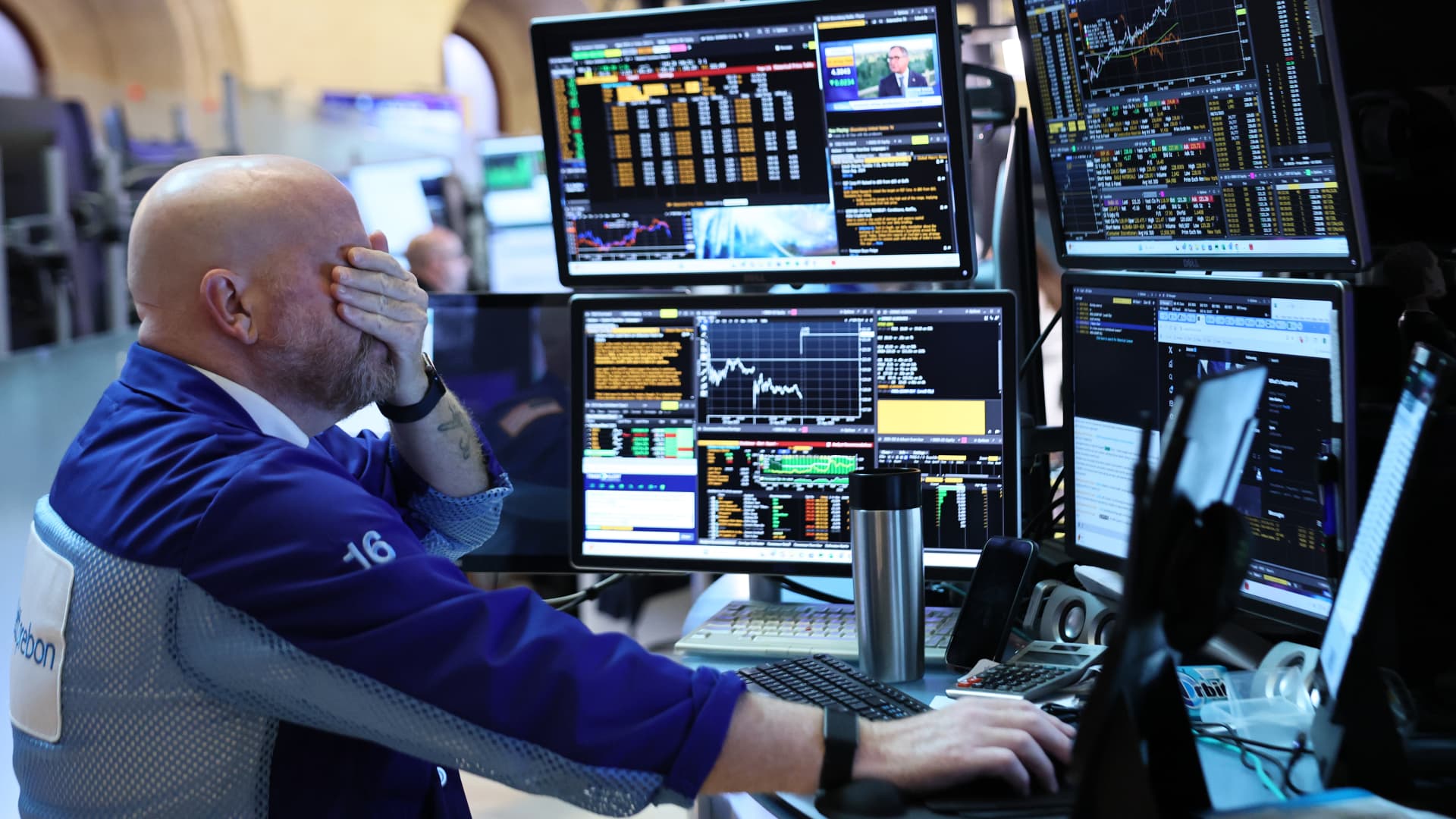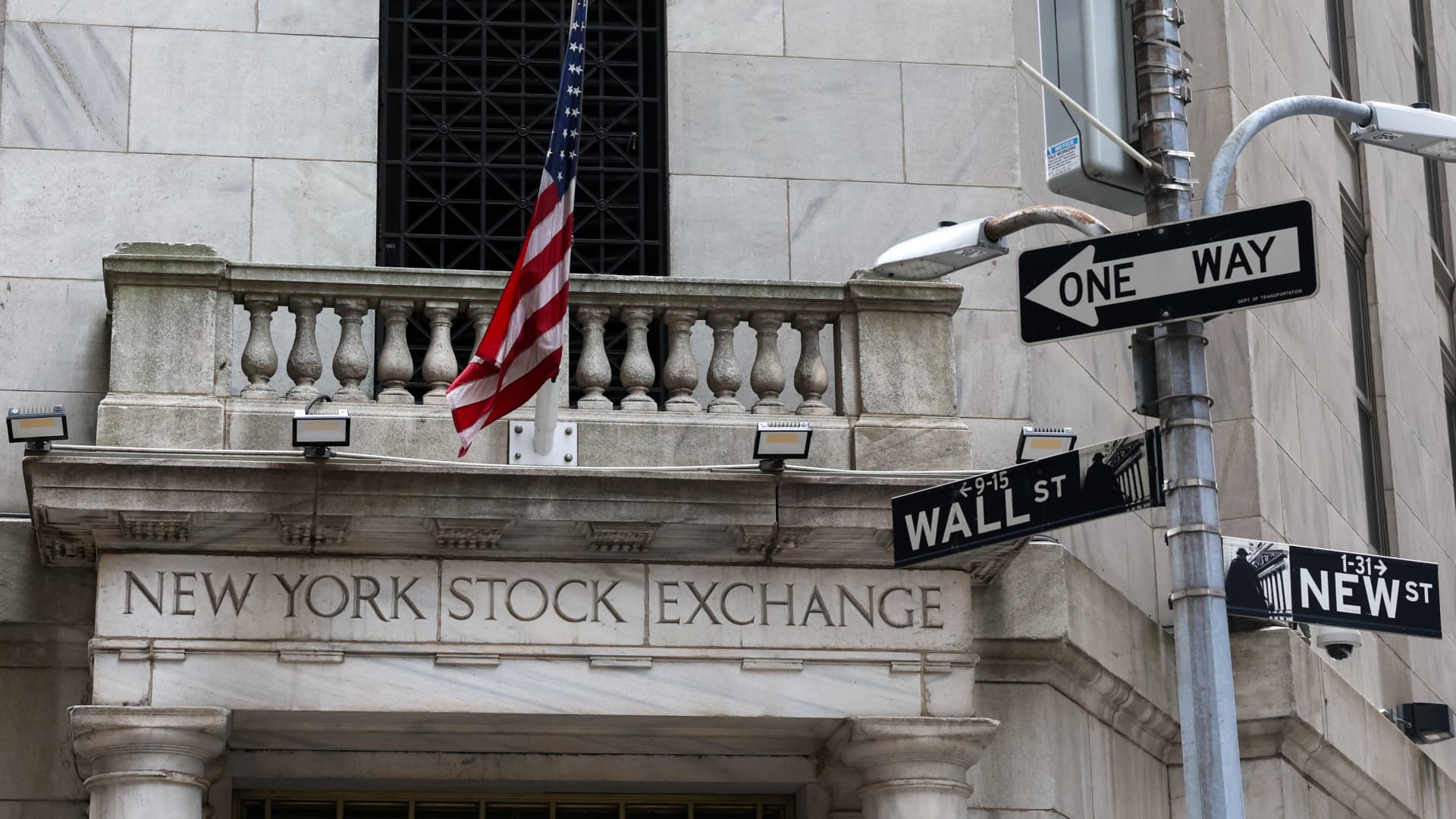Traders work on the floor of the New York Stock Exchange during morning trading on Aug. 22, 2025 in New York City.
Michael M. Santiago | Getty Images
September in markets is a bit like a Monday morning; no one looks forward to it, and it usually lives up to its reputation.
August gave investors plenty to cheer about, but history says September tends to be the worst month of the year for stocks.
The S&P 500 hit a fresh record high at the end of August, topping 6,500, while the Dow Jones also touched new peaks. Across the Atlantic, the Stoxx Europe 600 logged its first two-month winning streak since February.

S&P 500 in August
But the specter of September looms large. Traditionally, the Dow, S&P 500 and Nasdaq Composite all post their worst month of the year in September, according to Dow Jones data.
From a sector perspective, it’s a mixed picture, particularly in Europe. Two-thirds of the way through the third quarter — driven by corporate earnings across the continent and continued global macro uncertainty — there are clear winners and losers.
The biggest gainer? Europe’s banking sector. Shares hit their highest level since the 2008 financial crisis at the start of August, as positive earnings and more talk of deals in the space continued to drive growth.
Germany’s Commerzbank has led the charge higher, with shares adding to their already impressive performance in the first half, up over 100% year to date.

Commerzbank vs. WPP in August
On the downside, media stocks have been hit hard over the past two months — a decline of over 8% — with concerns over the impact of AI hitting a number of the big European players. Advertising group WPP was the sector’s worst performer, slumping as it reported a 71% pre-tax profit fall in the first half and cut its full-year outlook.

For September and the year ahead, some market participants are positive. “We believe the equity bull market will remain intact. In our base case, we expect an economic soft landing, solid corporate earnings, and lower interest rates to support markets over the next 12 months,” Mark Haefele, chief investment officer of UBS Global Wealth Management, said in a note.
Others are more cautious. EY-Parthenon Chief Economist Gregory Daco says the U.S. economy is “showing resilience, but it’s under increasing pressure. While the U.S. economy grew at a robust annualized rate of 3.0% in Q2 2025, the strength was largely a mirage, reflecting a sharp decline in imports after businesses accelerated purchases in response to tariffs earlier in the year.”
Looking ahead, a recent Barclays report predicted a slowdown in the second half, but a rebound in U.S. and European economic growth in 2026, saying “markets will move on from reacting to the twin topics of tariffs and the U.S. tax bill.”
As market-makers and investors return from their summer holidays to rebalance their portfolios, there will be some key moments to watch out for, including:
Economic data:
Monday: Labour Day (U.S. markets closed); EU unemployment
Tuesday: EU inflation; U.S. manufacturing data
Friday: EU GDP; U.S. non-farm payrolls
Other events to watch:
Sept. 8: French no-confidence vote
Sept. 11: ECB policy decision
Sept. 16-17: Federal Reserve policy decision
Sept. 17: President Trump makes state visit to U.K.
Sept. 18: Bank of England policy decision












